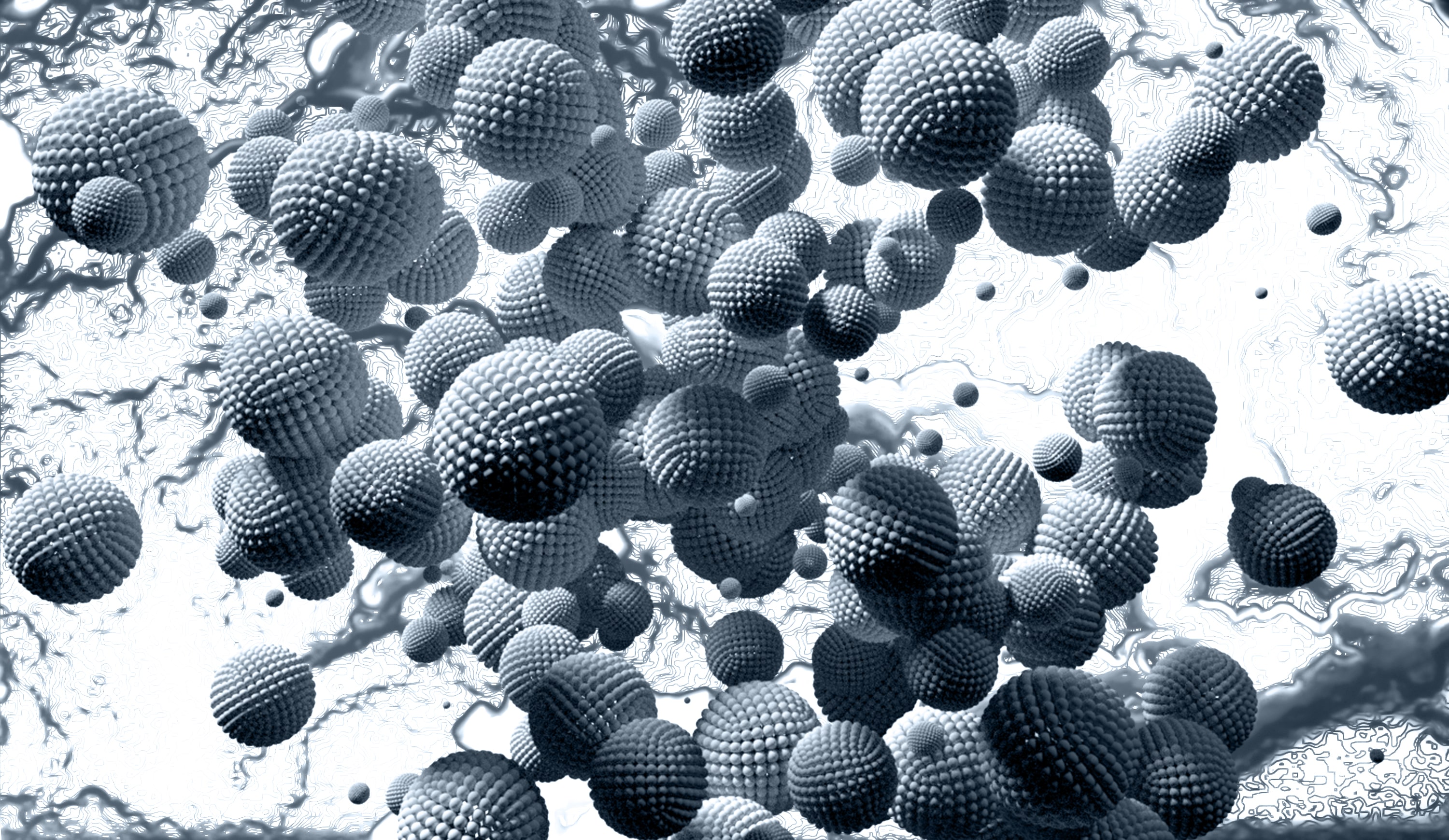IMPORTANT DATES
-
Abstract Submission opens:
September 01, 2023
-
Abstract Submission Deadline:
April 15, 2024
-
Standard Registration opens:
September 01, 2023
-
Standard Registration Deadline:
April 24, 2024
Session 1: Materials Science and Engineering
Materials science and engineering seeks to understand the
fundamental physical origins of material behavior in order to optimize properties
of existing materials through structure modification and processing, design and
invent new and better materials, and understand why some materials unexpectedly
fail.
Session
2: Nanomaterial and Nanotechnology
Nanotechnology is the atomic, molecular and
supramolecular-scale handling of matter. The fascinating thing about
nanotechnology is that as the size scale of their dimensions exceeds nanometers
the properties of several materials change. Materials scientists and engineers
are working to understand those improvements in properties and use them at
nanoscale stage in the production and manufacturing of materials.
Session
3: Metallurgical and Materials Engineering
Metallurgical and Materials Engineering
educates students about the verticals of different metals' physical and
chemical properties. This research mainly deals with all sorts of metal related
areas. The course covers Hydrometallurgy, Mechanical Metallurgy, Steel Heat
Treatment, Welding Metallurgy, etc. Using metallurgy, the metals are isolated
from their ore. It also concerns the chemical, physical, and atomic properties
and structures of metals and the principles by which alloy-forming metals are
mixed. The metallurgical sciences are divided into chemical metallurgy and
physical metallurgy.
A ceramic is a material that is neither
metallic nor organic. It may be crystalline, glassy or both crystalline and
glassy. Ceramics are typically hard and chemically non-reactive and can be
formed or densified with heat. Ceramics are more than pottery and dishes:
clay, bricks, tiles, glass, and cement are probably the best-known examples.
Ceramic materials are used in electronics because, depending on their
composition, they may be semiconducting, superconducting, ferroelectric, or an
insulator.
Crystallography is a
branch of science that deals with discerning the arrangement and bonding of
atoms with the geometric structure of crystal lattices in crystalline solids.
In chemistry and mineralogy, the optical properties of crystals have
traditionally been of interest for material identification. Modern
crystallography is essentially based on a study of X-ray diffraction by crystals
serving as optical gratings. Chemists are able to determine the internal
structures and bonding patterns of minerals and molecules, including the
structures of large complex molecules, such as proteins and DNA, using X-ray
crystallography.
Session
6: Computational Materials Science
Computational materials science and engineering uses
modeling, simulation, theory, and informatics to understand materials. The main
goals include discovering new materials, determining material behavior and
mechanisms, explaining experiments, and exploring materials theories.
Session
7: Biomaterials and Medical Devices
Biomaterials are materials used to build medical devices or
implants/prostheses, meant to restore or replace lost or impaired body
functions. They are derived from natural, synthetic or semi-synthetic (also
called hybrid) materials. Biomaterials play an integral role in medicine today—restoring
function and facilitating healing for people after injury or disease.
Biomaterials may be natural or synthetic and are used in medical applications
to support, enhance, or replace damaged tissue or a biological function.
The chemical process by which enzymes or other biological
catalysts perform reactions between organic components is known as biocatalysts.
Biocatalysts is widely used in the pharmaceutical industry to produce small
molecule drugs. In biocatalytic processes, natural catalysts such as enzymes
perform chemical transformations on organic compounds. Chemoenzymatic synthesis
is the use of natural or modified enzymes to perform organic synthesis; the
enzyme's reactions are classified as chemoenzymatic reactions.
Session
9: Smart Materials and Applications
Smart materials are materials with one or more properties that can
be dramatically altered by external factors such as electric or magnetic
fields, heat, moisture, light, temperature, pH, or chemical compounds in a
controlled technique. Smart materials are also called sensitive or reactive
materials. The Smart materials applications include sensors and actuators, or
artificial muscles, particularly as electro active polymers.
Session
10: Polymer Science and Technology
Polymer science or macromolecular science is a subfield of
polymer-related materials science, mainly synthetic polymers, such as plastics
and elastomers. The polymer science field includes researchers from many
disciplines including chemistry, physics, and engineering. Polymer
manufacturing used in the areas of electronics and electrical products,
textiles, aerospace, automotive, etc. Polymer Technology's recent advances have
advanced the field of material science, through the use of polymer-based
substances from electrical engineering, electronics, and construction materials
to packaging materials, fancy decoration products, automotive, etc.
Session
11: Functional materials
Functional materials can be any type of specially
designed material with a determined function: semiconductors, polymers,
molecular crystals or nanoparticles are good examples of them. It is their
special physico-chemical properties which make functional materials so special. Functional materials are widely used in various fields because of their
excellent properties, such as magnetism, catalysis, electrical and optical
properties, high specific surface area, and good mechanical properties.
Session
12: Composite Materials
A composite material is a combination of two
materials with different physical and chemical properties. When they are
combined they create a material which is specialized to do a certain job, for
instance to become stronger, lighter or resistant to electricity. There are different forms of composites, one is polymer composites
reinforced by fibres, and the other is composites reinforced by particles.
Fibre-reinforced polymer composites also known as composites for the polymer
matrix.
Energetic materials are a class of material with
high amount of stored chemical energy that can be released. Typical classes of
energetic materials are e.g. explosives, pyrotechnic compositions, propellants
(e.g. smokeless gunpowder’s and rocket fuels), and fuels (e.g. diesel fuel and
gasoline).
Semiconductors are materials which have a conductivity between
conductors (generally metals) and nonconductors or insulators (such as
most ceramics). Semiconductors can be pure elements, such as silicon or
germanium, or compounds such as gallium arsenide or cadmium selenide. A semiconductor is called a
semiconductor because it is a type of material that has an electrical
resistance which is between the resistance typical of metals and the resistance
typical of insulators, so it kind of, or "semi"-conducts electricity.
Materials physics is the use of physics to explain the materials'
physical properties. It is a combination of physical sciences such as
chemistry, solid mechanics, physics of the solid state, and science of matter.
The physics of materials is considered a subset of condensed matter physics and
applies fundamental concepts of condensed matter to complex multiphase media,
including technical materials of interest. Present fields in which physicists
of materials work include optical, electrical, magnetic materials, novel
materials and structures, material quantum phenomena, nonequilibrium physics,
and physics of soft condensed matter.
Session
16: Materials Chemistry
Materials chemistry is the understanding, synthesis,
processing, and exploitation of compounds or substances in their assembled
form. Materials chemistry is the synthesis, processing, characterization,
understanding, and exploitation of compounds that have useful or potentially
useful properties and applications. Materials Chemistry is important in
providing the conceptual basis for the design, development and understanding of
new types of matter, letting it be organic, inorganic or hybrid.
Session
17: Surface Science and Engineering
Surface science is the study of physical and chemical phenomena
that occur at the interface of two phases, including solid–liquid interfaces,
solid–gas interfaces, solid–vacuum interfaces, and liquid–gas interfaces. It
includes the fields of surface chemistry and surface physics. Surface science
and engineering, including tribology, but with a particular focus on friction,
wear, coating and surface modification processes such as surface treatment,
coating, machining, polishing and grinding. The science involves concepts like
self-assembled monolayers, heterogeneous catalysis, and fabrication of
semi-conductor structures, fuel cells, and adhesives.
A perovskite is a material with the same crystal structure as the
mineral calcium titanium oxide, which was the first perovskite crystal
discovered. Perovskite compounds have the chemical formula ABX3, where ‘A' and
‘B' are cations and X is an anion that bonds to both. Perovskite structures can
be formed by combining a wide range of elements. Using this compositional
flexibility, scientists can design perovskite crystals to have a wide variety
of physical, optical, and electrical characteristics.
Metamaterials are composite media that can be engineered to
exhibit unique electromagnetic properties. Made up from subwavelength building
blocks (most often based on metals), these metamaterials allow for extreme
control over optical fields, enabling effects such as negative refraction to be
realized.
Session
21: Biosensor and Bio-electronic Materials
Biosensors are defined as analytical devices incorporating a
biological material (e.g. tissue, microorganisms, organelles, cell receptors,
enzymes, antibodies, nucleic acids, etc.), a biologically derived material, or
a biomimetic intimately associated with or integrated within a physicochemical
transducer or transducing microsystem, which may be optical, electrochemical,
thermometric, piezoelectric, magnetic or micromechanical (Turner et al., 1987;
Turner, 1989). Biosensors & Bioelectronics is the principal international
journal devoted to research, design, development and application
of biosensors and bioelectronics. It is an interdisciplinary
journal serving professionals with an interest in the exploitation of
biological materials and designs in novel diagnostic and electronic devices
including sensors, DNA chips, electronic noses, lab-on-a-chip and μ-TAS.
Biosensors usually yield a digital electronic signal which is proportional to
the concentration of a specific analyte or group of analytes.
Session
22: Optoelectronic Materials
Optoelectronics is the research, design, and production of a
hardware device that transforms electrical energy into light and light into
energy using semiconductors. It is the connection between optics and
electronics. Optoelectronic devices are special types of semiconductor devices
that are able to convert light energy to electrical energy or electrical energy
to light energy. Solid crystalline minerals, which are heavier than insulators
but lighter than metals, are used to make this device. An optoelectronic device
is an electrical gadget that uses light. Numerous optoelectronics applications,
including those in the military, telecommunications, automatic access control
systems, and medical equipment, use this technology.
Session
23: Materials Characterization, Theory and Modelling
Materials characterisation is the progression of the physical,
chemical, mechanical and microstructural properties of materials being measured
and determined. It describes the compositional and structural characteristics
including material defects which are considerable for a particular preparation,
properties study.
The theory of materials is a research area that focuses on the
simulation, prediction, and design of materials. Using simulator-based methods
based on theoretical solid-state physics and mechanics of materials, we can
solve material behaviour and predict material properties, develop model systems
for materials in their complex application or industrialized context, and
reduce them to the crucial factors.
Session
24: Advanced Materials and Nanotechnology
Advanced materials described to refer to all materials
representing advancements over conventional materials used thousands of years
ago. Smart materials, semiconductors, biomaterials, and nanoengineered materials
include advanced materials. Advanced Materials Research focuses on the study of
novel building materials used in IT, effective mechanical engineering, space
engineering, medicine, and other areas. Nanodevices have a huge impact in
increasing pollution control, improving human health and longevity, producing
food and converting energy. These are crucial enablers that will allow humanity
to harness the ultimate technological capabilities of mechanical, magnetic,
electronic, and biological systems.
Session
25: Green Technologies
Green materials are local and regenerative materials. Local
materials are special to the area and bind whatever people in a region make.
Products such as stone, cement, and sand are green products from the earth.
Plant materials like bamboo, grasses, wool, and wood are also materials that
have been used by humans since construction started.
Attendee Criteria
Attendance is generally limited to active researchers and authors of accepted abstracts. Authors of accepted abstracts are pre-approved for registration. All other researchers must Sign up and register towards the conference.
A very limited number of spots are available for individuals in Keynote/Plenary positions. Some of the Keynote and Plenary Speakers will have an opportunity to chair any session during the conference.
25 Oral presentation spots are available for 2-day events. The individual speaker is allowed to present a maximum of 2 talks at the conference.
Who Can Attend
Researcher/Academic /Industrial / Clinical / Private / Marketing
Researchers actively participating in basic science investigations, clinical studies, or epidemiologic research.
Physicians & Scientists who have faculty appointments at academic institutions including medical school programs, or practitioners who are involved in patient care or counselling.
Industries related to pharmaceuticals, Manufacturing, Services, Clinical can achieve visibility and credibility, exhibiting at a trade show has hundreds of benefits for your business. Establishing a presence, whether big or small, for your company at an exhibition gives you a powerful platform for meeting new customers, reaching out to your existing clients, and building a more established and reliable brand.
Clinical takes advantage of the educational and networking opportunities designed for hospital professional.
Marketers from generating new business to staying current with the latest trends, attending marketing events, meetings, and conferences can be crucial to the success of a company’s or individual’s growth strategy. There are some key benefits for why marketers should consider attending networking events.
1. Build Meaningful Relationships
2. Stay Current with Trends by Learning from Powerful Speakers
3. Connect with Influencers and in Turn, You’re Target Audience
4. Get Fresh Ideas and Solutions for Your Business.
Various sessions in our Conferences:
Plenary Talk: A plenary talk of a conference which all members of all parties are to attend. Such a session may include a broad range of content, from keynotes to panel discussions, and is not necessarily related to a specific style of presentation or deliberative process.
Keynote: This is a talk on a specific theme which represent the whole subject of the conference. Keynotes are usually delivered by Professors, President of associations, MD and above.
Oral Presentation: A presentation is a process of presenting a topic to an audience. It is typically a demonstration, introduction, lecture, or speech meant to inform, persuade, inspire, motivate, or to build goodwill or to present a new idea or product.
Delegate: One who gains knowledge, comprehension or mastery through experience or study; someone who learns or takes knowledge or beliefs; one that is learning; one that is acquiring new knowledge, behaviour’s, skills, values or preferences.
Poster Presentation: A poster presentation, at a congress or conference with an academic or professional focus, is the presentation of research information, usually peer-reviewed work, in the form of a poster that conference participants may view. A poster session is an event at which many such posters are presented.
Workshop: A workshop is designed to teach something or develop a specific skill while an academic conference is about presenting original research and getting feedback from peers. A workshop doesn't necessarily have to present original research; it is directed more towards teaching and learning in an interactive environment.
E-poster: An e-Poster or digital poster is a digital presentation of research that is presented within a congress.
Video Presentation: Animated or recorded video describing a research or review topic. Video talks for usually not more than 20-30mins)















